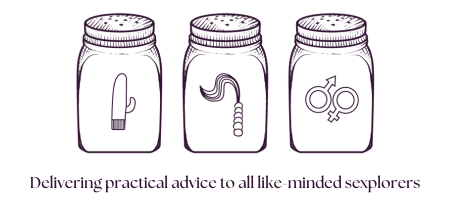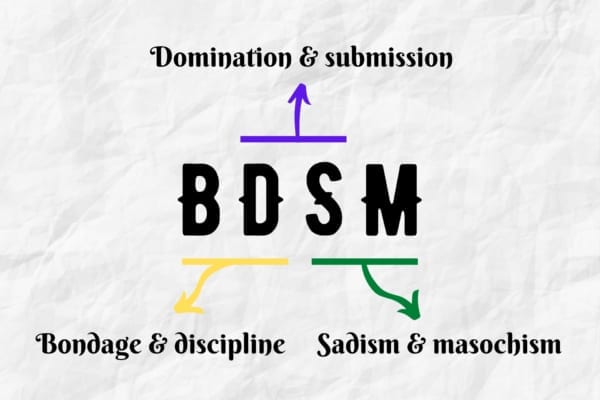Does the word BDSM invoke thoughts of pain, spikes, dungeons? Does it freak you out? Or, does it make you a little bit curious?
Whether you fall in the first category or second, we’re going to introduce you to the world of BDSM and debunk all the myths you may have. It is a whole dimension of bedroom plays which is so huge and wide that there is something for everybody.
What does BDSM stand for?
BDSM meaning stands for Bondage & Discipline, Domination & Submission, Sadism and Masochism and it covers a wide range of erotic bedroom plays, from mild to wild.
What is BDSM?
In general, it is an umbrella term for certain kinds of erotic behaviors between consenting adults in addition to many subcultures that exist. There is the terminology that is used among the subcultures, it may vary, but those used widely are:
- top/ dominant – used for those partners that are physically active or controlling
- bottom/ submissive – used for those partners the physically receptive or controlled
The interaction that happens, between tops and bottoms. where physical or mental control of bottoms is surrendered to the top is called ”power exchange”.
Here are 5 things you should know about it.
BDSM as an ”event” is usually referred to as ”play”, ”scene”, ”scenario” or ”session” and partners involved get pleasure from it. Although, sexual intercourse can happen during a ”session”, it’s not necessary.
People do tend to have ”sessions” that do not include sex at all. The fundamental principle is that it should be performed with the consent of all involved parties and with clear boundaries and safe words because that is what makes a legal and ethical distinction between BDSM and crime.
Initials facets of BDSM would be:
- Bondage and Discipline
- Dominance and Submission – where both females and males can take on either role
- Sadism and Masochism
Bondage and discipline…
are aspects that do not seem to relate to each other, but they have some conceptual similarities. The term bondage describes physical restraint, while discipline describes psychological restraint.
Also, B&D does not define dom’s and sub’s, it defines activities with one partner being a receiver and the other being giver.
Dominance and submission…
are related to giving and accepting control of one individual over another. It could be in an erotic or lifestyle context. While B&D describes activities, D&s is related and explores a more mental aspect of BDSM. Follow the link to find out how D/s relationships work and why is it D/s and not D/S.
The power dynamic in which the female is the dominant one is usually called female domination or femdom.
There is a similarity with the Master/ slave relation where a slave is a specific type of submissive. Not all submissives are slaves, though all slaves would normally be considered submissive in the relationship.
For people not in BDSM, the relationship of Master/slave is sometimes regarded as a form of consensual sexual slavery.
Sadism and Masochism…
or S&M, a sadist is usually the Dom, while the masochist is the sub, but these roles are often complicated and don’t have to be clear. Sadomasochists also play without any power exchange, while both partners equally control the play.
Types of BDSM plays
Here is the list of some common BDSM plays – to help paint the picture of what is that about:
- Sexual roleplay (see also: M/s relationships, slave training, submissive/ slave positions, erotic roleplay)
- Spanking
- Tickle torture
- Edgeplay
- Animal roleplay or pet play
- Flogging
- Age play (DDlg)
- Medical play
- Play piercing
- Wax play
- Human furniture
- Bondage
- Breast torture
- Cock and ball torture
- Erotic electrostimulation
Closing thoughts
I hope you got a better hang of BDSM now, in the future, it is something we will extensively cover.
There are so many things you can try out that are suitable for beginners and could introduce you to this world, step by step. If done properly, with necessary preparation and consent, BDSM can spice up your sex life greatly while building an even better and deeper connection with your partner.
What is your opinion on BDSM, would you or are you practicing it?












BDSM encompasses a multitude of varieties